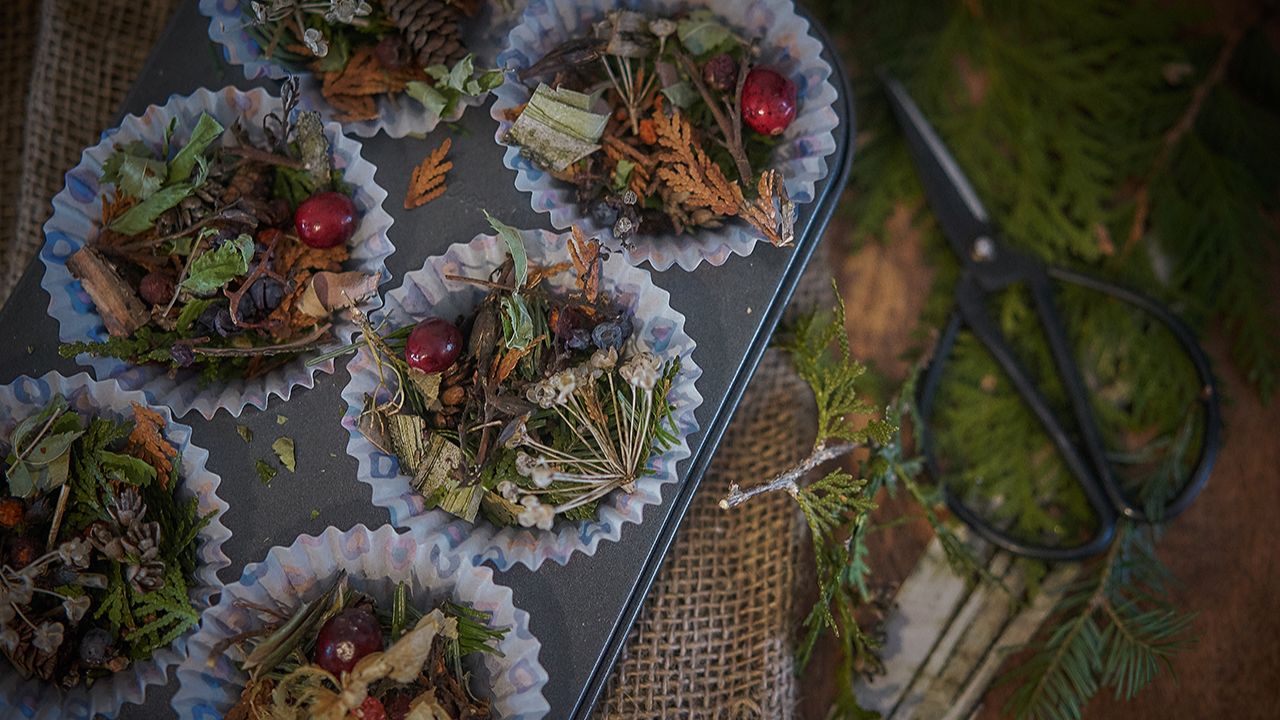
Herbs for Baths: How to Make a Relaxing Herbal Bath at Home
Drawing an herbal bath is a fantastic way to nourish your body, tend to your nervous system, and luxuriate in a deep self-care ritual. I regularly craft herbal baths for myself with a wide variety of herbs like rosemary, rose, chamomile, and more. One of my favorite herbal baths to indulge in is a milky oats and damiana bath. These sensual, soothing herbs leave my body feeling grounded and my mind refreshed.

Drawing a DIY herbal bath is a wonderful way to promote deep relaxation.
How I Fell in Love with Healing Herbal Baths
When I started learning about herbalism and coming to know myself as a herbalist, there was a lot of talk of herbal infusions and what, in Québec where I’m from, we called in French “tisanes.” Many a night around the campfire with my new herb-loving friends was spent in herbal tea-soaked conversation, all high on nettle or milky oats or raspberry leaf tea. There was only one problem: I’ve never been into herbal tea.
All the real herbalists seemed to love herbal tea with a capital L, but deep down, I just secretly wished the evening cups of herbal tea could be replaced with sparkling water, or juices, or maybe even a nice little spritzer?
Still, I couldn’t deny the way the herbal infusions made me feel. I could sense the herbal magic taking place inside my body and mind when I did ingest them. That combination of water and herbs together was a potent one, and I was determined to find a way to love it. Enter herbal baths: it’s just like drinking a nice big pot of herbal tea, but it’s even better because instead of drinking it, you soak in it.

Creating an herbal bath allows you to soak in a huge batch of herbal tea.
The Health Benefits of DIY Herbal Baths
There’s something deeply soothing and healing about soaking in a large tub full of herbal tea. Whether to nourish and revitalize, to shift emotional states, or to spark a sensual mood, therapeutic herbal baths can be tailored to meet your needs.
Healing herbs make pleasurable and therapeutic additions to an herbal bath. These days, I’m leaning toward milky oats and damiana as the go-to herbal allies to enjoy in the form of herbal baths and soaks.
Nervous system conditions such as stress, fatigue, and low moods all have a strong affinity with a protocol of milky oats and damiana herbal baths. Herbal soaks are available to anyone with access to a tub and a large casserole pot to steep tea in.

There are so many herbs you can add to your bath. Lavender and roses are some of the most popular options.
Herbs for Your Bath: How to Make a Relaxing Herbal Bath at Home
This is my favorite method for herbal baths. In this recipe I use oatstraw, milky oats, and damiana for a calming, sensual bathing experience. You can customize your bathing experience by replacing these herbs with other common herbs like roses, calendula, and more.
Ingredients You’ll Need…
- 2 handfuls of dried oatstraw (or a combination of oatstraw and milky oats)
- 2 handfuls dried damiana leaf/flower
-
Need herbs? Visit Mountain Rose Herbs.
 |
 |
|---|
- Bring a large pot of water to a boil.
- Add your herbs to the water.
- Cover and let steep for 15–30 minutes.
- Strain into a large metal bowl.
- Fill a bathtub with hot water and add strained herbal tea.
- (optional) You can steep the same herbs in the pot several times, in order to get the most healing compounds out of them. I often steep mine upwards of five times.

Herbal baths can help soothe and relax the nervous system.
The Benefits of Using Water as a Solvent for Medicinal Herbs
Water is a common solvent for herbal extraction. Some of the advantages of using water as a solvent include:
- Readily accessible
- Low cost compared with other solvents
- Extracts herbal constituents well
- Nontoxic and hypoallergenic
Known as a universal solvent, water is used in the extraction of a wide range of constituents, such as minerals and water-soluble vitamins (C and the B-complex vitamins such as vitamins B6, B12, niacin, riboflavin, and folate).

Milky oats are a traditional nervous system tonic that nourish and calm and the body.
The Benefits of Milky Oats
Milky oats (Avena sativa) provide powerful nutrition in the form of vitamins and minerals like calcium, potassium, and vitamin C. As a traditional nervous system tonic and a potent nutritive herb, oats are commonly used in cases of anxiety, depression, and fatigue.
Taken over long periods, milky oats help boost stamina and strength.
What’s the Difference Between Milky oats and Oatstraw?
Medicinal oats can be consumed as milky oats or as oatstraw.
Milky oats are the oat seeds harvested during the milky latex stage of development before they have fully ripened. Oat tops in that milky stage possess a strong medicinal tonic and restorative action on the nervous system.
Oatstraw, on the other hand, is the aerial part of the plant and includes the stem and leaf. It’s most often used as a nutritive tonic because of its high vitamin and mineral content.
Which one should you use? Though I usually work with milky oats, I also like to use a blend of both milky oats and oatstraw. Go for the type of oat preparation that is most accessible to you.

Damiana is a relaxing and uplifting aphrodisiac herb.
The Benefits of Damiana
Damiana (Turnera diffusa) brings benefits to the nervous system as a nervine tonic that helps balance relaxation and excitement. The leaves of the aromatic shrub act as an antidepressant and anxiolytic to relieve depression and anxiety.
Damiana is a celebrated aphrodisiac that helps soothe nerves and enhance moods in support of a healthy libido. As a nervine herb, damiana particularly benefits those who suffer from chronic stress, tension, and low moods.

Regularly enjoying a DIY herbal bath can bring more sensual relaxation into your daily life.
What Are The Best Herbs For a Bath?
In addition to oatstraw and damiana, I regularly craft herbal baths for myself with a wide variety of herbs like rosemary, rose, and chamomile. Some other herbs you might enjoy experimenting with include peppermint, lavender, and lemon balm. These herbs can be used either fresh or dried.
How Often Should I Draw an Herbal Bath?
Herbal baths can be enjoyed daily, weekly, monthly, or at whatever other cadence fits into your life. There’s no wrong way to do it. Enjoy!










